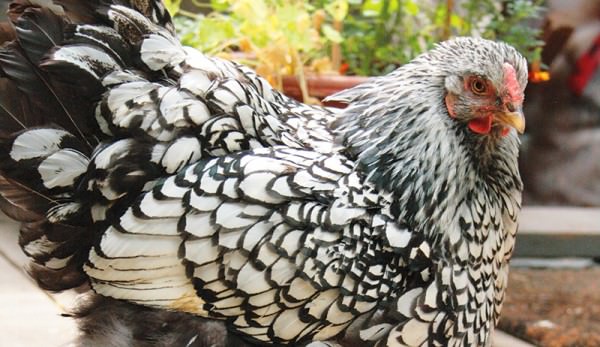
My father had a weakness for strays, so I grew up with an ever-changing menagerie that waxed and waned as they came and went. Some, too broken or dependent to go back to the wild, stayed; others were eager to heal and head for home. He had a soft spot for the rejected and unwanted, the maligned, the mangy, the motley and even the nefarious: raccoons, skunks, crows, a caiman he must have smuggled back with us from Florida, even a lonely squirrel monkey he spotted at the mall. And, of course, there were all the usual suspects: canaries, budgies, dogs, rabbits, hamsters, fish and a funky-smelling stray tomcat named Wally Walnuts, along with the ducks and chickens. It all seemed perfectly normal to me.
I loved all the animals, but it was the unique relationship we humans can have with chickens that left the most lasting mark on me. I never stopped wanting chickens again: Through college, office work and years of apartment living, it was out of the question, but I longed for a flock of my own. I was that urbanite, sitting in front of her computer until late into the night looking at pictures of coops, exotic breeds, hens, roosters, impossibly sweet and fluffy baby chicks.
I read and learned, dreamed and planned for the day I’d bring my chickens home to roost. Until then, I could always garden, and I did. Oh, it was a lush garden! Soft, cool areas of grass for lying on, edged by wide swaths of wild, tall perennials and self-sowing annuals tumbling out of control—my own little English cottage garden right in the heart of the city.
I planted my veggies in tidy rows, paths of old bricks I’d found set in between; volunteer Echinacea, monarda, gooseneck loosestrife and morning glory added color and enticed pollinators and hummingbirds. At the height of summer, I could hide myself from the world behind tall, tangled masses of pinks, whites, reds, purples and greens … and then the chickens came.
My chicken fixation had been reaching a crescendo. I was getting frantic; the cravings were bad. So when the last impediment, a stick-in-the-mud boyfriend, got the heck out of my way, I did it. I went in search of my first flock and brought home rescued ex-battery hens, aka ex-bats: two goofy Leghorns and a Rhode Island Red. One of the Leghorns was blind, so I named her Helen, as in Keller. The other was her support, and they stuck together, so she became Annie Sullivan, natch! The red? Ginger.
Every season the hens teach me something new about chicken-keeping, gardening, compromising and enjoying the moment amidst the impermanence of life. And speaking of impermanence, while he didn’t live to see it, I know Father would have felt right at home in my garden, my coop and my kitchen, complete with my own feathered menagerie of strays.
The way I see it, hen keeping is a natural extension of the kitchen and garden; it’s a symbiotic relationship as old as agriculture between human, hen and plants. In the peak of summer, when my ladies are laying well and the garden is in major production mode, I will pop outside my back door, collect a couple of eggs—sometimes still warm from the hen—then visit the garden to see what’s ripe and ready. I’ve made complete meals from five-minute “market trips” into the garden, feeling terribly pleased with myself and grinning like an idiot the whole time. It’s been said in a number of ways by a many folk throughout time: “Hunger is the best sauce.”
I love that old adage but would like to add a sprinkling of satisfaction and a dash of self-sufficiency. That stuff is damn tasty!
This article was reprinted with permission from Happy Hens & Fresh Eggs: Keeping chickens in the kitchen garden, with 100 recipes (Douglas and McIntyre, 2015) by Signe Langford, available wherever books are sold.




